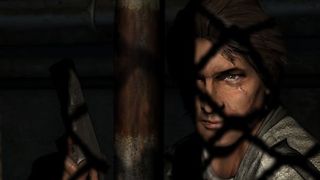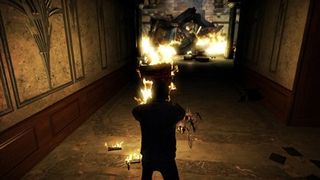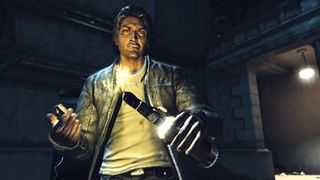When every day heralds a near-endless procession of videogames to peer at, you quickly learn how to sift the good from the garbage. A particularly telling sign is when, as a game is demoed to you, your glaringly empty hands start to itch. Because you really want to play this one. Which is exactly how we felt during a recent eyes-on with Alone in the Dark.

Our hands, our frustratingly controller-less hands, began to twitch almost immediately from the first sequence. Largely due to the astoundingly credible look and behaviour of the game's fire effects. We always rate fictional fire against the hypnotic flames of that 90s classic,Backdraft. Alone in the Dark's blazes score very highly on the Backdraft-o-meter.

The fire physics (fiysics, perhaps?) is old territory. We'vebanged onabout itfor ages. But that's only because every time we see the game (invideo, orscreenshots, or finally in person) the crackling charm of Alone in the Dark's major techno calling-cardleaves us, well, hot under the collar. Sorry, that was lame. But you get the point.
But what about the new stuff? Well, we finally got to see the much-lauded (by Atari, at least) episodic catch-up sequence. Like the traditional TV series memory-jogger, it begins thus: "Previously, on Alone in the Dark...". Honestly, we're not sure it's as big a draw as Atari make out, but it's a neat little feature - if it's used properly.
What's good about Alone in the Dark's approach is that we aren't force-fed a simple cutscene session. Instead there'll be several gameplay moments spliced into the recollection, helping to stir your own memories of past glories. Obviously, these aren't your gameplay moments - just pre-captured examples - but they work well enough.

